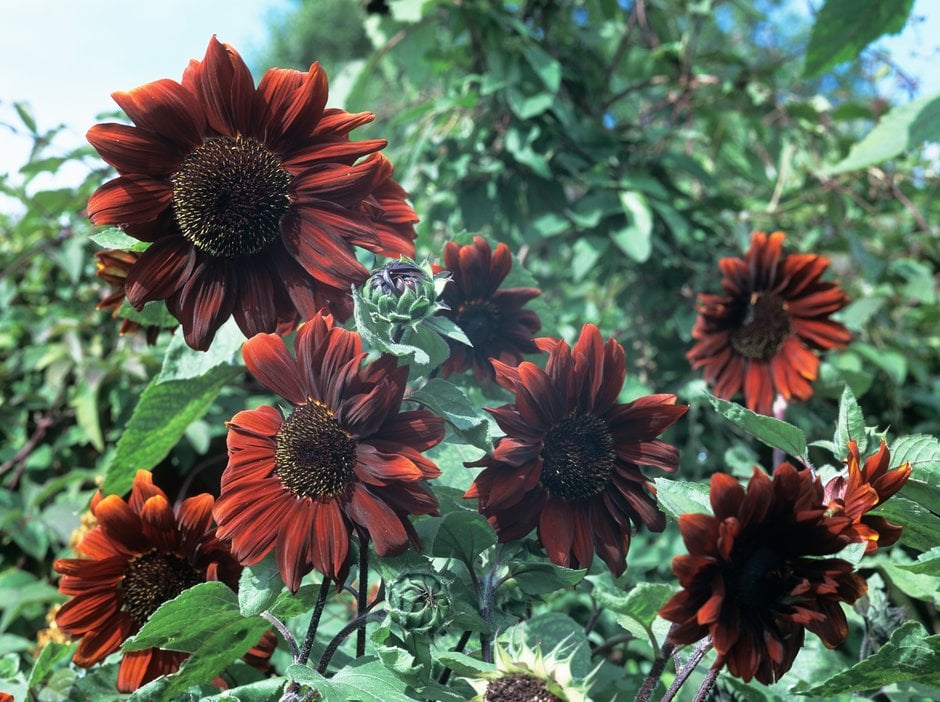Helianthus annuus 'Claret'

sunflower 'Claret'
A robust annual to around 1.5m in height, with green foliage. Single, black-centred, dark reddish-brown flowers to 15cm across, develop shades of orange as they mature, appearing on dark stems from July to September. An ideal variety for children to grow in borders or containers, and tolerant of partial shade
Size
Ultimate height
1–1.5 metresTime to ultimate height
1 yearUltimate spread
0.1–0.5 metresGrowing conditions
Moisture
Moist but well–drainedpH
Acid, Alkaline, NeutralColour & scent
| Stem | Flower | Foliage | Fruit | |
| Spring | Green | |||
|---|---|---|---|---|
| Summer | Red Orange | Green | ||
| Autumn | ||||
| Winter |
Position
- Full sun
Aspect
South–facing or West–facing
Exposure
Exposed or Sheltered Hardiness
H2Botanical details
- Family
- Asteraceae
- Native to GB / Ireland
- No
- Foliage
- Deciduous
- Habit
- Columnar upright
- Genus
Helianthus can be tall, erect annuals, tuberous or rhizomatous perennials, with coarse simple leaves and large daisy-like flower-heads
- Name status
Accepted
How to grow
Cultivation
Grow in moderately fertile, neutral to alkaline, humus-rich, moist but well-drained soil in full sun. Will tolerate partial shade
Propagation
Propagate by seed or cuttings. See sowing seeds indoors for further advice
Suggested planting locations and garden types
- Cottage and informal garden
- Wildlife gardens
- Cut flowers
- Flower borders and beds
Pruning
Cut back after flowering
Pests
Diseases
May be susceptible to powdery mildews and sclerotinia diseases
Get involved
The Royal Horticultural Society is the UK’s leading gardening charity. We aim to enrich everyone’s life through plants, and make the UK a greener and more beautiful place.
